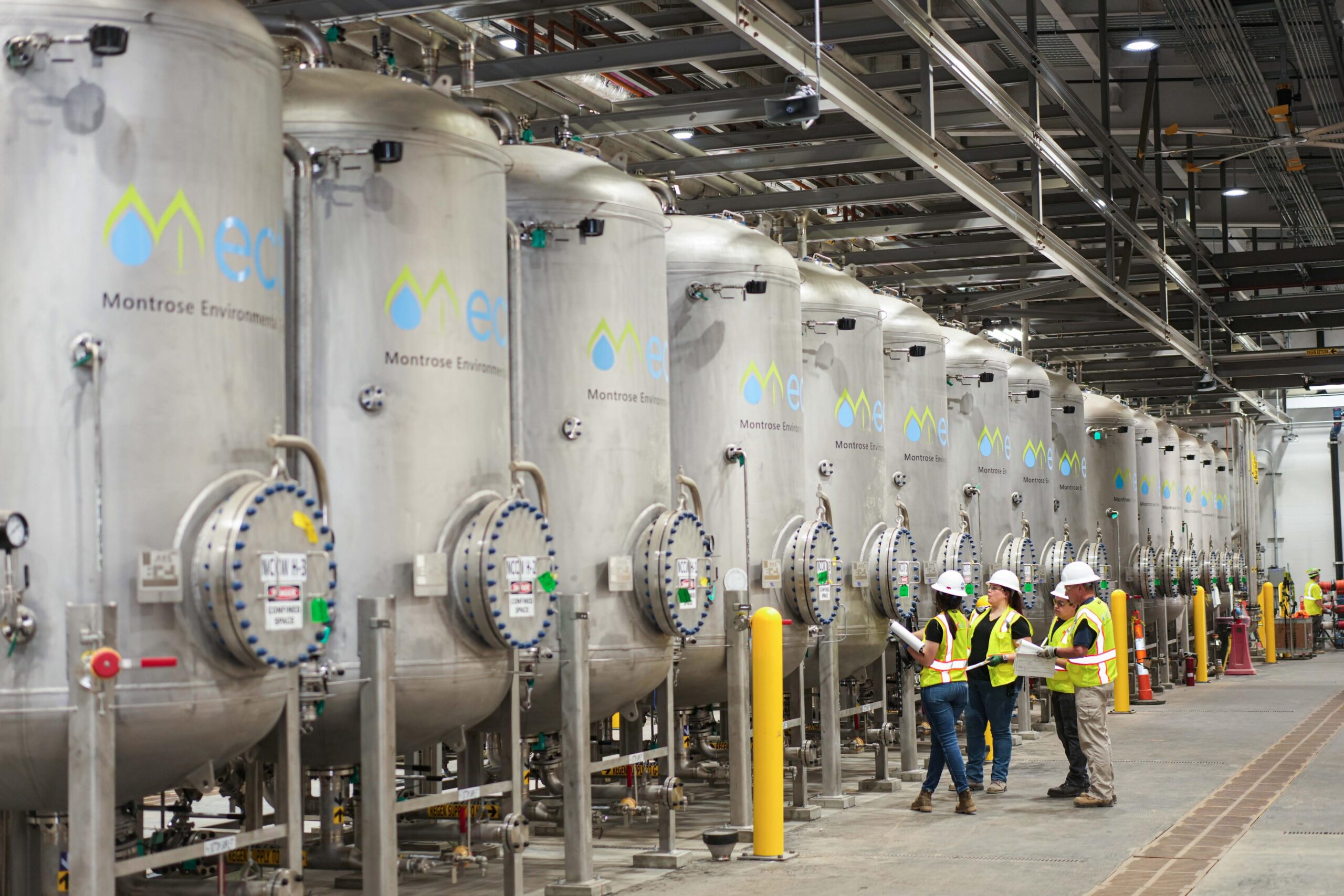How M270 Waste Management Help in the Management of Toxic Materials
Wiki Article
Your Guide to PFAS Treatment Technologies and Benefits
The prevalence of PFAS contamination in water sources demands a complete understanding of readily available therapy modern technologies. Each technology not just targets particular PFAS substances however likewise plays a critical duty in improving total water high quality and shielding ecological honesty.Comprehending PFAS Contamination
Recognizing PFAS contamination is vital for addressing its prevalent effect on environmental and human wellness (m270 pfas treatment). Per- and polyfluoroalkyl materials (PFAS) are a group of artificial chemicals commonly utilized in different industrial and consumer products due to their water- and grease-resistant residential or commercial properties. Commonly found in firefighting foams, non-stick cooking equipment, and water-repellent materials, PFAS have actually entered the atmosphere with production procedures, wastewater discharges, and leaching from garbage dumpsAs soon as launched, these substances continue the setting, causing extensive contamination of dirt and water resources. Their one-of-a-kind chemical structure, identified by solid carbon-fluorine bonds, makes them resistant to destruction, leading to a sensation called "for life chemicals." Consequently, PFAS can accumulate in the body and the food chain, possibly creating unfavorable health and wellness results, including body immune system disturbance, developmental problems, and an increased danger of particular cancers cells.
Governing agencies and health and wellness companies are increasingly acknowledging the significance of PFAS contamination, motivating efforts to monitor, examine, and minimize its impacts. Understanding the paths of PFAS contamination is necessary for informing public law and developing effective methods to secure both environmental and human health and wellness.
Introduction of Therapy Technologies
Numerous treatment innovations have actually been established to attend to the obstacles postured by PFAS contamination in water and soil. These technologies can be extensively categorized right into several groups, each with its distinct systems and efficiency in getting rid of PFAS substances.One famous approach is ion exchange, which uses resin products to record and get rid of PFAS from infected water. This approach is particularly reliable for short-chain PFAS and can accomplish significant decreases in concentration levels. Another modern technology, advanced oxidation procedures (AOPs), uses strong oxidants and ultraviolet light to break down PFAS right into less unsafe compounds. AOPs appropriate for dealing with a variety of PFAS compounds but may require mindful optimization to take full advantage of effectiveness.

Activated Carbon Filtering
Triggered carbon filtering is a widely made use of approach for the elimination of PFAS from polluted water, understood for its capacity to adsorb a wide range of organic substances. This technology utilizes activated carbon, a very permeable material with a substantial surface location, which helps with the binding of PFAS particles via physical adsorption. The effectiveness of triggered carbon in getting rid of PFAS is affected by several factors, consisting of the type of carbon utilized, the contact time, and the focus of PFAS in the water.One of the advantages of turned on carbon filtration is its flexibility; it can be implemented in different arrangements, such as granular triggered carbon (GAC) systems or powdered activated carbon (POLITICAL ACTION COMMITTEE) systems. GAC systems are typically employed in larger-scale applications, while special-interest group can be utilized in smaller sized or short-lived configurations. In addition, the innovation is fairly simple to operate and maintain, making it easily accessible for many water therapy centers.

Ion Exchange Equipment
Ion exchange pfas management systems represent an additional effective method for the removal of PFAS from contaminated water, matching methods like activated carbon purification. These systems run on the principle of exchanging ions in the water with ions hung on a resin product. Ion exchange materials can be particularly created to target the negatively charged PFAS substances, efficiently capturing them and enabling cleaner water to go through.One of the primary advantages of ion exchange systems is their capacity to get rid of a wide variety of PFAS, consisting of both long-chain and short-chain variations. This versatility makes them suitable for different applications, ranging from metropolitan water therapy to commercial procedures. In addition, ion exchange systems can frequently accomplish reduced detection limitations for PFAS compared to some various other therapy methods, hence boosting water top quality.
However, it is vital to check and take care of the regeneration of ion exchange media, as the performance can decline with time as a result of saturation. Proper upkeep and replacement of the resin are crucial for maintaining the system's effectiveness. Overall, ion exchange systems supply a reputable and effective option for PFAS elimination, contributing dramatically to safe alcohol consumption water standards and environmental management.
Advanced Oxidation Processes
Advanced Oxidation Processes (AOPs) use powerful oxidants to properly deteriorate PFAS substances in infected water. These innovative therapy techniques generate very reactive types, such as hydroxyl radicals, that can damage down complicated PFAS molecules right into much less dangerous results. m270 pfas treatment. AOPs normally employ combinations of ultraviolet (UV) light, ozone, hydrogen peroxide, or Fenton's reagent, improving the oxidation capacity and improving degradation efficiencyThe primary advantage of AOPs depends on their capability to target a wide variety of PFAS substances, consisting of both long-chain and short-chain variants. This adaptability is necessary, as PFAS contamination frequently includes blends of various substances with varying chemical frameworks. AOPs can be incorporated into existing water therapy systems, making them a practical service for numerous districts and industries.
Nonetheless, the application of AOPs can be resource-intensive, requiring cautious factor to consider of operational costs and power consumption. Furthermore, while AOPs work in damaging down PFAS, they may not totally remove all results, demanding more treatment steps - m270 pfas treatment. Overall, AOPs represent an appealing opportunity for addressing PFAS contamination, contributing to cleaner water resources and boosted public health and wellness defense

Final Thought
By choosing the proper modern technology, communities can enhance water top quality, shield public wellness, and reduce the ecological threats associated with PFAS exposure. Proceeded research and application of these techniques are important for efficient management of PFAS contamination in influenced areas.Report this wiki page